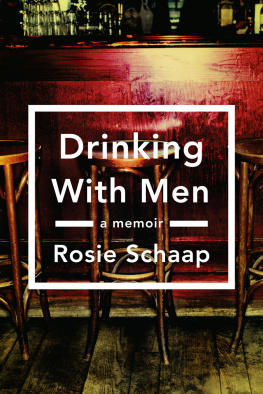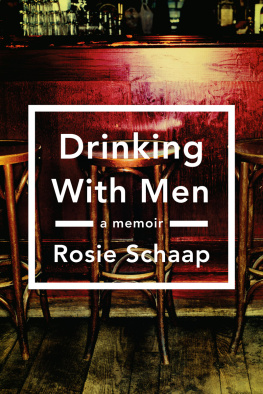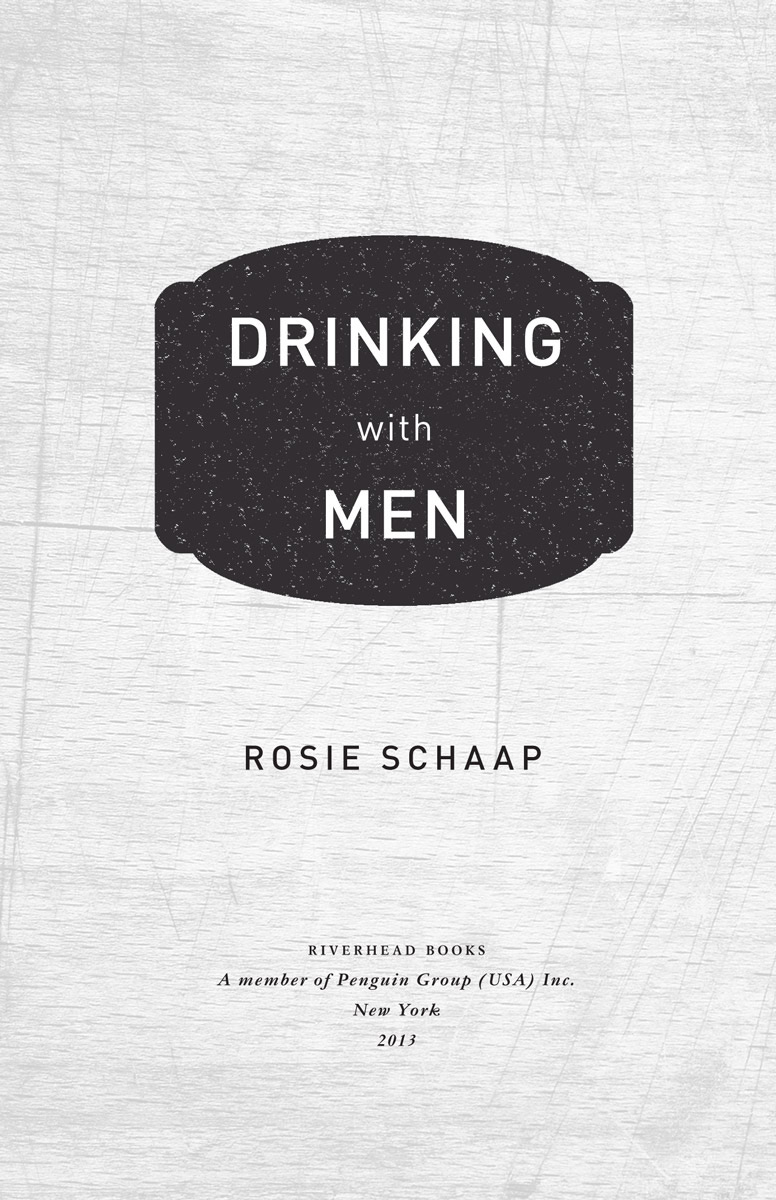
RIVERHEAD BOOKS
Published by the Penguin Group
Penguin Group (USA) Inc., 375 Hudson Street, New York, New York 10014, USA Penguin Group (Canada), 90 Eglinton Avenue East, Suite 700, Toronto, Ontario M4P 2Y3, Canada (a division of Pearson Penguin Canada Inc.) Penguin Books Ltd, 80 Strand, London WC2R 0RL, England Penguin Ireland, 25 St Stephens Green, Dublin 2, Ireland (a division of Penguin Books Ltd) Penguin Group (Australia), 707 Collins Street, Melbourne, Victoria 3008, Australia (a division of Pearson Australia Group Pty Ltd) Penguin Books India Pvt Ltd, 11 Community Centre, Panchsheel Park, New Delhi110 017, India Penguin Group (NZ), 67 Apollo Drive, Rosedale, Auckland 0632, New Zealand (a division of Pearson New Zealand Ltd) Penguin Books (South Africa), Rosebank Office Park, 181 Jan Smuts Avenue, Parktown North 2193, South Africa Penguin China, B7 Jiaming Center, 27 East Third Ring Road North, Chaoyang District, Beijing 100020, China
Penguin Books Ltd, Registered Offices: 80 Strand, London WC2R 0RL, England
Copyright 2013 by Rosie Schaap
All rights reserved. No part of this book may be reproduced, scanned, or distributed in any printed or electronic form without permission. Please do not participate in or encourage piracy of copyrighted materials in violation of the authors rights. Purchase only authorized editions.
Published simultaneously in Canada
Library of Congress Cataloging-in-Publication Data
Schaap, Rosie.
Drinking with men / Rosie Schaap.
p. cm.
ISBN 978-1-101-60312-3
1. Schaap, Rosie. 2. Bars (Drinking establishments). I. Title.
HV5137.S33 2013
362.292092dc23
[B]
2012030405
Some names and identifying characteristics have been changed to protect the privacy of the individuals involved.
Penguin is committed to publishing works of quality and integrity. In that spirit, we are proud to offer this book to our readers; however, the story, the experiences, and the words are the authors alone.
For Ma, and for Frank
Time is never called in my recurring dream of pubs.
CIARAN CARSON, Last Nights Fun
Contents
INTRODUCTION
T hirteen thousand hours.
Thats a rough estimate, scratched out on the cocktail napkin in front of me, of how much time Ive spent in bars. An indelible reckoning.
Many people would say that every one of those hours was wasted, but not me. I wouldnt change a momentnot even the time I nearly got clocked by a barstool turned projectile in the midst of an altercation between two grizzled old punks, nor the evening a seemingly innocuous, if inebriated, couple all but forced me to referee their debate about whether they should stay together or break up. (For the record: I thought they were a perfect match, and advised them to give it another shot.) Ive come of age in bars, and theyve given me as much of an education as college did, and have fostered many of my strongest friendships. That could be why a certain type of barsmall, welcoming, with a lively chorus of voices and the house lights turned down to a warm glowwill exert a gravitational pull, compelling me to return one night after the other, and often twice on Sundays.
But my attraction to bars is less governed by the laws of physics than it is by the rules of romance: I prefer one bar at a time. When it comes to where I drink, Im a serial monogamist. Still, although loyalty is upheld as a virtue, bar regularhoodthe practice of drinking in a particular establishment so often that you become known by, and bond with, both the bartenders and your fellow patronsis often looked down upon in a culture obsessed with health and work. But despite what we are often told, being a regular isnt synonymous with being a drunk; regularhood is much more about the camaraderie than the alcohol. Sharing the joys of drink and conversation with friends old and new, in a comfortable and familiar setting, is one of lifes most unheralded pleasures.
And yes, that goes for women, too. Or it should, anyway. If regularhood is considered suspect behavior, then female regularhood is doubly so. In many parts of the world, women just dont go into bars alone. Even in comparatively less patriarchal societies, such as our own, a solitary woman at a bar is a curiosity, a wonderment to be puzzled over. And even in New York, where all things seem possible, as a bar regular who happens to be female, I am something of an anomaly. Regularhood is still predominantly the province of men.
Ive been going into bars since the age of fifteen. Certainly in my youth I knew that patronizing bars was unusual behaviorbut I figured that was due to my age, not my gender. There was the excitement of getting one over and getting served, of trying to fit in, unquestioned, with grown-ups in their natural habitat. But as I got older and that thrill abated, what I discovered in bars was much richer. As a regular, I have found friendship, comfort, and community. Mostly, Ive found that fellowship in the company of men. Relations between the sexes at bars are often perceived as predatory and dangerous. But I did not look to bars for a place to hook up; I looked to bars for a place to belong.
In 1936, Vogue editor Marjorie Hillis counseled readers of her single-girl guide Live Alone and Like It. It is not incorrect for a woman to go alone into any bar she can get into, she wrote, but we dont advise it... if you must have your drink, you can have it in a lounge or restaurant, where you wont look forlorn or conspicuous. I find it remarkableand a little depressingthat nearly eighty years later, ideas identical to hers still seem deeply internalized by many women. I just dont feel comfortable walking into a bar alone, a friend once told me. Like everyones looking at me and feeling sorry for me. Like theres something wrong with girls who go drinking by themselves.
For better or worse, Ive seldom worried about whos looking at me or not looking at me, or about what they might or might not be thinking. But I have noticed a pattern: Every time Ive fallen hard for a bar, Ive invited my best girlfriends to join me there for a drink, meet my fellow regulars, soak up the ambience that I found so appealing. Invariably, they like it. They have a good time. But, unlike me, they have no particular interest in returning the next night, or the next, or the ones that follow. Not only does the idea of becoming a regular at a bar hold no allure for them, they are also often puzzled by my enduring bar-love. But they have come to admire my ability to integrate, to talk to anyone, to be one of the guys.
In his very funny 1935 tract Her Foot Is on the Brass Rail, the humorist and newspaperman Don Marquis laments the post-Prohibition presence of women in bars. For men, there was no longer any escape, no harbor or refuge... where the hounded male may seek his fellow and strut his stuff, safe from the atmosphere and presence of femininity. In my experience these concerns have been beside the point; if anything, my chronic regularhood has made me assimilate into a largely male culture, not change itexcept by the fact that I am part of it.
Regardless of my gender, a bar is my safe haven, my breathing space. Knowing how to read a bar helps. My favorites have never been big, rowdy sports bars teeming with testosterone or trendy spots featuring cutting-edge cocktails, but intimate, friendly neighborhood places where relationships with other regularsand bartendershave the right conditions to take hold, and where my instincts tell me its a safe space to be a woman in a bar. At its best, bar culture is both civilized and civilizing, and at the end of a long, stressful day, I know I can head to my local and the bartender will know exactly what I wantoften whiskey, occasionally a mixed drink, but usually these days red wine in a tumbler, as a stem is too much botherand will set it down before me, ask me about my day, listen to me vent. And instantly, I relax. I remember to exhale.














